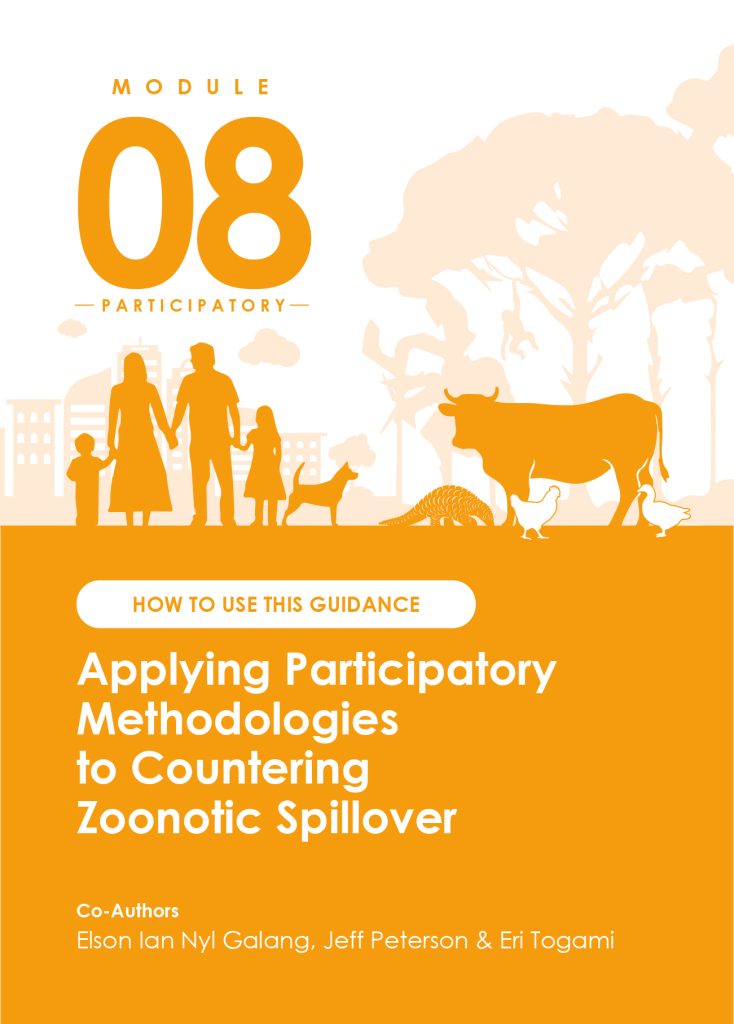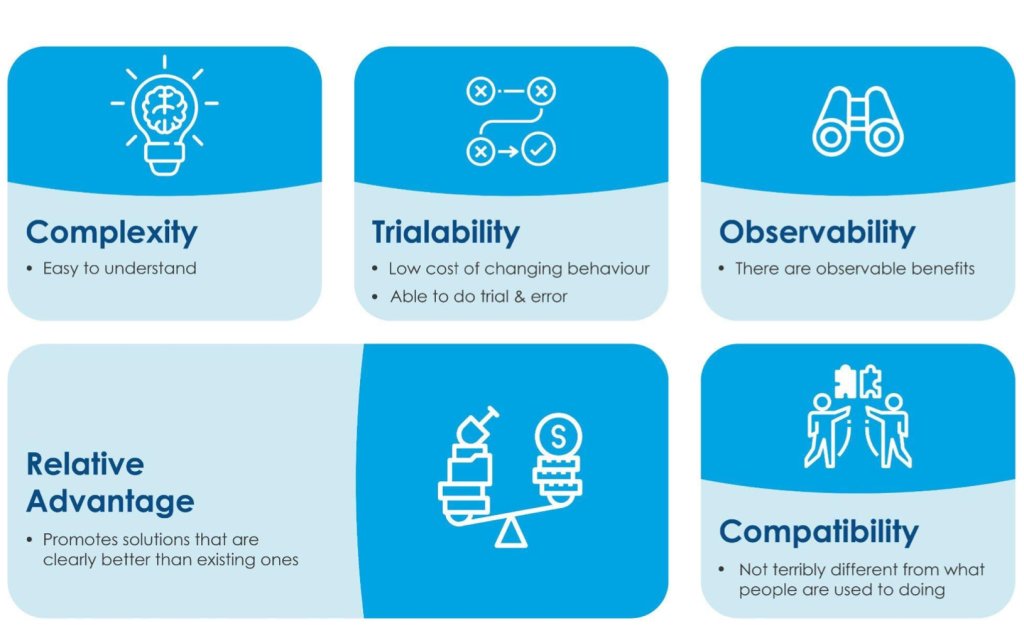

Strategies for Implementing Zoonotic Prevention Measures
- Keep messages simple
- Focus on compatibility across sectors
- If it works, make sure the results are plain to see
- Develop guidelines that include practices and policies that are going to be perceived as “better” than what is currently in place.
- Ensure “low risk” by allowing for the possibility that practices and policies are flexible according to circumstances and that adopters can “back out” of their commitments
How to Use this Guidance
The cultural, social, economic, environmental, and political contexts of the country, region, or organization must be carefully accounted for when seeking to develop useful and effective guidelines. This is particularly essential for the richly diverse region of Southeast Asia region. Modules 2-6 discuss strategies to improve current and future practices and policies related to One Health and zoonotic spillover. Essential to any improvement is a change in human behavior. This module details “participatory approaches” to engage diverse actors across all points of the live animal value chain. Such approaches to implementation not only ensure a more holistic and contextualized process but can pave the way to better ownership, salience, and legitimacy of the outcomes of implementation. The module outlines the key components of the the participatory approach implementation process, including how to take into account cultural, social, economic, political, and environmental contexts, and how to recognize and respect the characteristics of the people involved. (The development of this guidebook used several of the participatory approaches that are described). Finally it illustrates the necessity of a blend of methodologies, including implementation science, participatory research, and other social sciences to improve the uptake of the spillover prevention methods and outcomes.
Contents
- Context from multiple levels
- Characteristics of the people engaged
- A participatory approach to implementation
- Practical ideas on how to foster genuine engagement
- Characteristics of best policies and practices
- Best strategies for implementing zoonotic prevention measures
- The vision of a participatory approach to implementation

Project Management
The project, Countering Zoonotic Spillover of High Consequence Pathogens (HCP), is conducted in collaboration with the US National Academies of Sciences, Engineering, and Medicine (NASEM).
The project is locally managed by Project Officer, Hazel Yean Ru Ann, who is co-located with the INGSA-Asia office at Sunway University, Malaysia.
If you or your organisation are involved with the live animal supply chain in Asia, or have expertise in zoonosis, we encourage you to get in touch with the Project Officer and help us to operationalise and disseminate best practice in the field.

